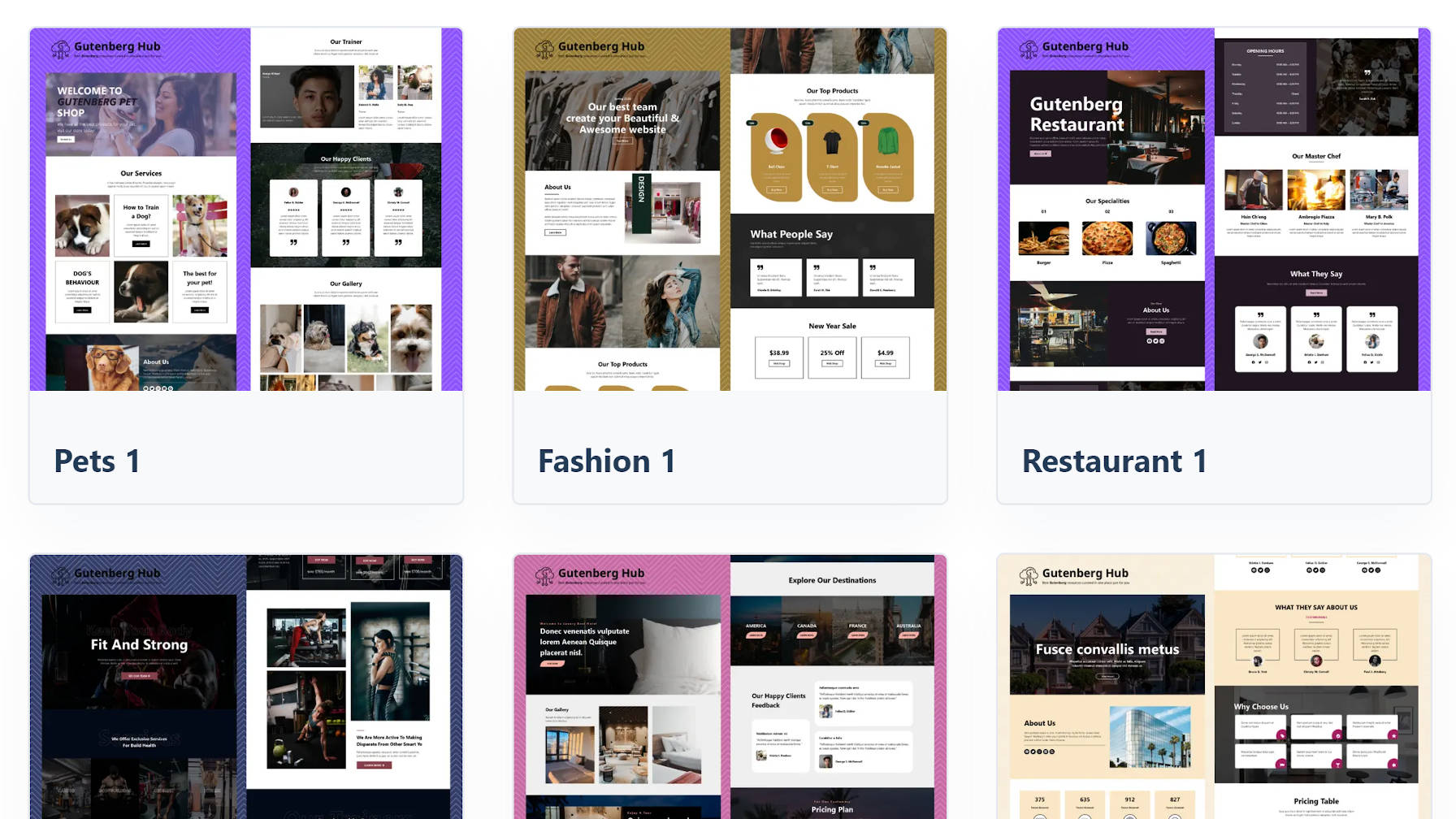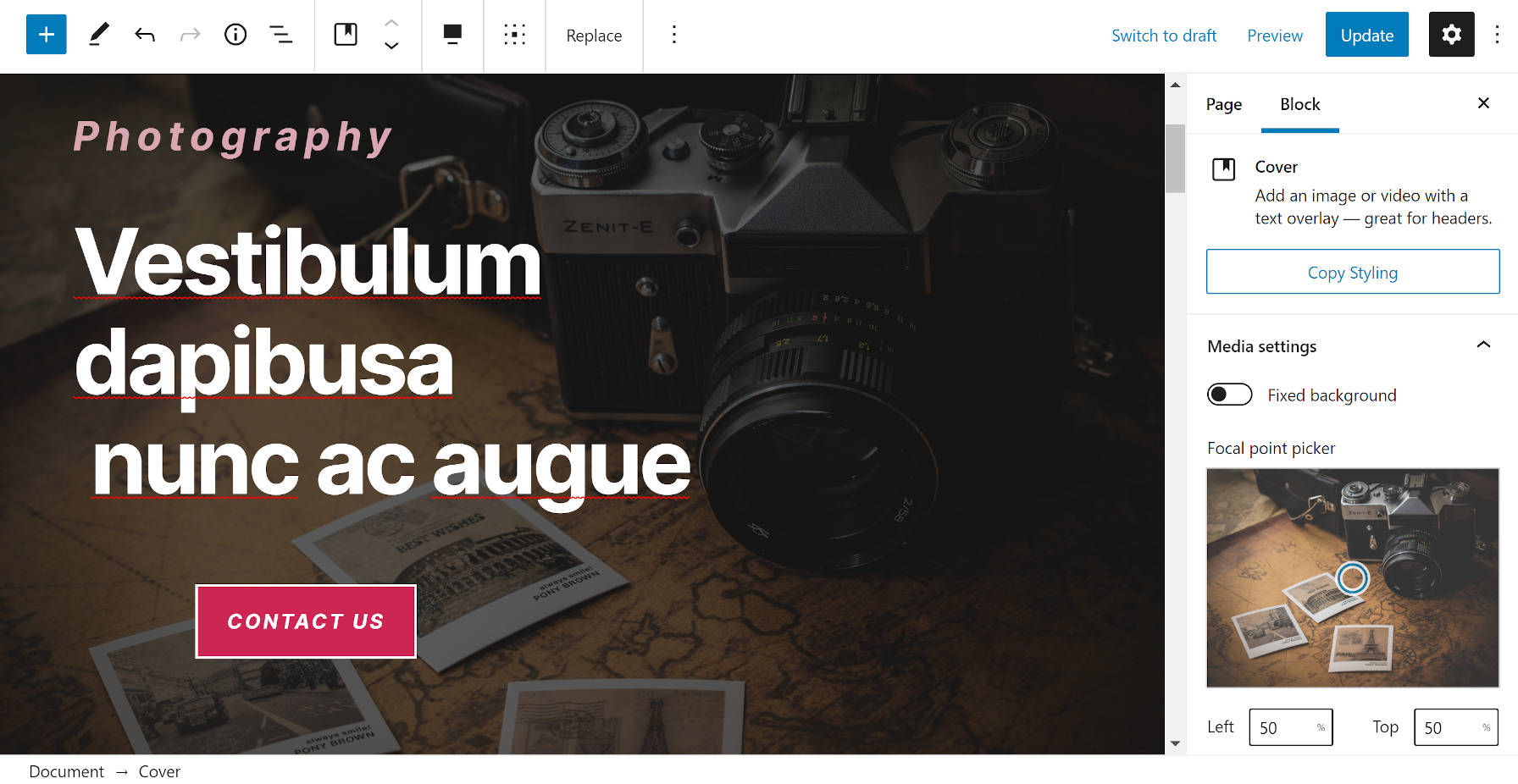
Munir Kamal has created copy-and-paste blocks. He has built sections or “patterns” from those blocks. He has created a plugin that allows users to completely customize the two features via block options. Yesterday, he released an initial offering of 22 landing page templates that build upon his earlier work.
Gutenberg Hub can almost be called his magnum opus, at least at this stage of his career. It is a continually growing library of free tools for WordPress’s block editor.
Like previous projects, Gutenberg Hub’s landing templates require the EditorPlus plugin. This plugin is essentially a suite of design controls for the core WordPress blocks. The templates make use of these options by default. Given the limitations of the block editor’s current design controls, the use of such a plugin is necessary. Otherwise, there would be few other ways to realistically create a template system like this.
Currently, users must copy the block code — via a convenient “copy” button — from the Gutenberg Hub website and then paste it in the editor. It is not an ideal situation, and I have been asking Kamal whether he would consider building a template inserter for months now.
This time around, he preemptively said, “And, by the way, I am already working on adding a Template Inserter in my EditorPlus plugin. That will allow users to browse and insert these templates directly from Gutenberg without leaving the website.”
He knew the question was coming. No need for me to ask again. He was unable to share a current screenshot of what the inserter looks like, but he is asking for feedback on what people expect of the user experience and interface.
“Earlier, I created a template inserter similar to other blocks plugins, but later I changed my mind and thought that I should integrate with the Gutenberg Patterns API and load the templates into the ‘patterns’ panel in the block inserter,” he said. “But, I am having a few issues and thinking about going back to the original idea to have a Templates button on the top toolbar that opens a popup window to browse and filter templates that users can insert on a click.”
For now, it is still early. However, at least it is on the long-term roadmap and being worked on.
The Landing Page Templates

At the moment, Gutenberg Hub offers 22 landing page templates. The “page” terminology may not mean “full page.” It simply depends on the active theme. Some themes have an open-canvas type of template that allows users to create the entire page via the editor. However, that is not a common feature, so these page templates will be confined to the post content area in most cases.
The templates also work better with themes that have at least a full-width or no-sidebar option. End-users will want a lot of breathing room to use the templates and tinker with their designs.
Kamal has built templates that stretch across a variety of industries. From restaurants to gyms to education to fashion, there is a lot to choose from right now. He promises more are on the way and at least a 23rd template in the next few days.
“For the niches, I did some research from the top WordPress and HTML marketplaces and found the following most common or popular niches,” he said. “I think I will stick with these niches unless I get some more recommendations.”
In comparison, Redux Templates offers access to over 1,000 sections and templates. Of course, there are trade-offs, such as some of those being commercial and the plugin typically requiring other third-party plugins. While quantity is not the only thing to look at, it proves there are miles of landscape that Gutenberg Hub’s templates have not yet explored. But, it is merely the beginning.
Gutenberg Hub’s full-page templates are not quite as plug-and-play as its blocks and section templates. This is not so much a fault from the developer’s end. It is an issue of the platform, which is constantly being updated, and the range of support from current themes. End-users will start seeing some of the current limitations of the system when a layout does not quite look right with one theme but does with another. Or, if their theme has not been updated to support a new feature, such as the Social Links block, the typical horizontal menu design will likely be a normal vertical list of links instead.
These are not insurmountable issues. Gutenberg and themes need more time to mature before projects like Gutenberg Hub’s landing templates are perfect or at least as close to perfect as can be expected.
There are some things that Gutenberg Hub could improve with its templates. With several that I tested, I needed to switch specific blocks to be full width. This should be set up as the default with templates that are clearly meant to be full width in the example screenshots available on the site. It is a minor issue, but correcting this in the editor fixed several layout issues I was having when using the templates.
Monetization Plans
The second question that Kamal has not been prepared to answer fully over the past several months is how he will monetize Gutenberg Hub. Eventually, developers need some return on their investment when building tons of free tools. Many would do it all for free as long as their bills somehow got paid, but the reality is that there will come a tipping point where their projects need funding for long-haul maintenance.
Kamal said he has laid the groundwork for funding but has not finalized anything yet. Currently, he is working on three ideas:
- Creating a pro version of his EditorPlus plugin.
- Offering premium templates and blocks but is looking for a talented designer to work with.
- Using ads specific to Gutenberg users, but he is not a fan of going this route or ads in general.
He is open to feedback on how to best monetize the website and its projects. However, he said he is unwilling to compromise on giving away current and future free templates and tools.
Future Gutenberg Projects
Kamal said he does not have any new Gutenberg-related projects in the pipeline. The current plan is to work on what he has already created, which is a large ecosystem of Gutenberg tools that somehow work together.
Outside of blocks, templates, and plugins, he is beginning to write more free tutorials on the Gutenberg Hub blog and focusing on creating videos around the project, including a new tutorial series for beginners.
Update:
Two new Templates Added Today that makes it a total of 24 Full Page Templates for Gutenberg (💯 FREE).
Skin Specialist
https://gutenberghub.com/templates/skin-specialist-1/
Yoga Classes
https://gutenberghub.com/templates/yoga-1/
And I will not stop here for sure. 😇